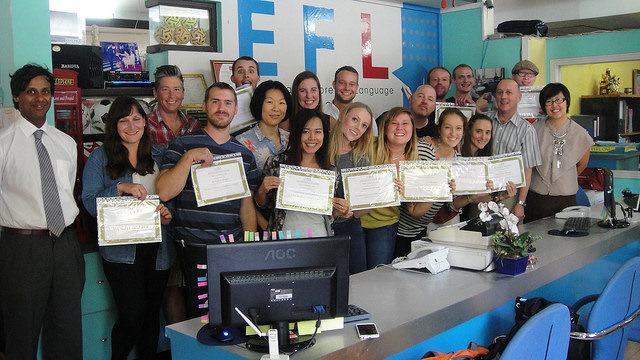What is the Schengen Area in Europe?
Let's take a look at the Schengen Region of Europe, what the Schengen Zone is and the travel advantages it offers for teachers who are considering teaching English in Europe.
Written By: Chelsea Hendrickx | Updated: June 29, 2023
Written By: Chelsea Hendrickx
Updated: June 29, 2023

If you’re looking into teaching English in Europe, you may have come across something called the Schengen Zone/Area in your research, but what exactly is this?
The European Schengen Zone
What is the Schengen Area?
The Schengen Area is comprised of over 20 countries in Europe that have rid themselves of the strict border controls that used to exist between them. While many of the countries in this area are part of the European Union (EU), it should not be confused with the EU, as the member countries are different. Not all EU countries are a part of the Schengen region of Europe, while some non-EU countries are in it.
What are the Countries in the Schengen Region?
The countries that are part of the Schengen Zone are: Austria, Belgium, the Czech Republic, Denmark, Estonia, Finland, France, Germany, Greece, Hungary, Iceland, Italy, Latvia, Liechtenstein, Lithuania, Luxembourg, Malta, the Netherlands, Norway, Poland, Portugal, Slovakia, Slovenia, Spain, Sweden and Switzerland.
For complete and up-to-date information about which countries are members of the Schengen Area and visa requirements, visit the European Commission’s page.

Traveling between countries within the Schengen Area is similar to traveling between states within the U.S. – you can travel freely from Florida to Georgia without having to pass any border agents or show any papers, and you can do the same today from Spain into France. Prior to the creation of this agreement, you would have to show your passport at every border and receive a different entry stamp for each country. This agreement has allowed people, including English teachers to travel more freely across Europe, without having to get a specific visa or entry stamp for each country.
How Long Can I Stay in the Schengen Region?
When you enter any country in the Schengen region of Europe, you are not just entering that one country; you are entering the entire area. Tourists visiting any country in the area will typically have up to 90 days not just in the country of entry but the whole region before they are obliged to leave (the exact number of days allowed depends on your nationality).
So if you receive a 90-day tourist visa upon entry to Italy, it’s technically a 90-day stamp for the entire Schengen Area. This means you can’t spend 90 days in Italy and then hop over to France and try to renew it for another 90 days.
These days are counted cumulatively, not consecutively. This means that if you leave the Schengen region for a period of time, your day count will stop until you reenter the zone (for example, if you leave Spain to go to Morocco for a week, those 7 days in Morocco will not count towards your 90 days).
If I complete my 90-day allotment, when can I reenter the Schengen Zone?
Again, this may vary based on your nationality, but for Americans, you are basically allowed to be in the Schengen Region for 90 days within a 180-day period beginning with your initial entrance into the Schengen Zone. After 180 days, your 90-day allotment will restart.
NOTE: You cannot restart or renew your 90-day visa for the Schengen Zone simply by leaving the region and re-entering (a practice commonly known as "border hopping").
Before traveling to Europe, it’s important to review the current regulations within the Schengen Area. Border controls can be temporarily re-imposed for reasons regarding public policy and national security. Countries may have entered or exited the agreement since you last checked. It’s crucial to be well-informed before heading over.
NOTE: Americans & Canadians can typically enter Schengen nations on a standard tourist visa without getting a visa in advance. Citizens of some other nations may need to apply for a visa in advance of arrival. If you have questions about whether you need to get your visa in advance, please contact the consulate of any nation (or visit their website) you plan to visit to get information.
Fun fact for your next trivia night: Schengen is the name of the town in Luxembourg where the initial agreement proposing this idea was signed!
Posted In: Teach English in Europe, Teach English Abroad Visas
Chelsea Hendrickx
Chelsea grew up in South Florida and attended the University of Florida. Following graduation, she hopped on a plane to teach English in Japan with the JET program for two years. Chelsea has worked as an Admissions Advisor at International TEFL Academy for more than 3 years and has assisted hundreds of ITA students in teaching English in Japan and around the world.
Want to Learn More About Teaching English Abroad & Online?
Request a free brochure or call 773-634-9900 to speak with an expert advisor about all aspects of TEFL certification and teaching English abroad or online, including the hiring process, salaries, visas, TEFL class options, job placement assistance and more.







